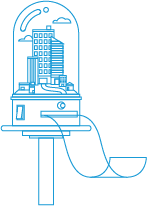It’s normal for a business to experience financial ups and downs, and even longer periods of financial stress.
But how do you tell the difference between temporary stress and financial distress leading to insolvency?
The simple definition of insolvency is when a business cannot pay its debts when they fall due. Sometimes this is a little difficult to determine – especially when cashflow is volatile and debt exists.
To get a clearer understanding of what determines whether a business is insolvent, a court case back in 2003 ascertained the following factors as evidence of insolvency:
- The business has continuing losses.
- Commonwealth and state taxes are overdue.
- Liquidity ratios (liquid assets vs short term liabilities) are below 1:1.
- There is a poor relationship with the company’s bank and an inability to borrow more money.
- The business has no access to alternative finance.
- There is no way to raise further equity capital.
- Suppliers have placed the company on “cash on delivery” terms or are demanding special payments before resuming supply.
- Creditors remain unpaid outside trading terms.
- Post-dated cheques or dishonoured cheques have been issued.
- Special arrangements exist with selected creditors.
- Solicitors’ letters, summons, judgments or warrants have been issued against the company.
- The business has made payments to creditors of rounded sums which are not reconcilable to specific invoices.
- The business is unable to produce timely and accurate financial information on its trading performance and financial position, or make reliable forecasts.
DO THESE INSOLVENCY INDICATORS STILL APPLY TO TODAY’S BUSINESSES?
It has been almost 20 years since that judgment was handed down, and the way businesses operate and manage their finances has changed dramatically.
For example:
- Most payments and receipts are paid and received electronically
- Cash and cheque payments are rare
- Bookkeeping is often computerised and real time information is now readily available

- An increasing number of assets are secured by creditors
- Most businesses have direct online access to the ATO’s portal to view statements
- Superannuation statements can be viewed online
- “Buy now, pay later” companies and debt factoring (selling your accounts receivables to a third party) now exist
- E-commerce is superseding physical stores and warehousing
DOWNLOAD OUR NEW INSOLVENCY INDICATORS CHECKLIST
While some of the classic indicators of insolvency are still relevant, we at RSM have compiled a short modern-day checklist of possible insolvency indicators.
DOWNLOAD YOUR FREE COPY HERE >
RSM’s Restructuring and Recovery experts welcome the opportunity to sit down with business owners and their advisers to discuss their circumstances, and advise on the various options available – including options where owners can maintain control while a restructuring plan is worked through.
For more information
Looking to understand how you can protect your business from the risks of insolvency? Speak to one of our friendly experts today.
To start a conversation, contact the Restructuring and Recovery team at your local RSM office.


